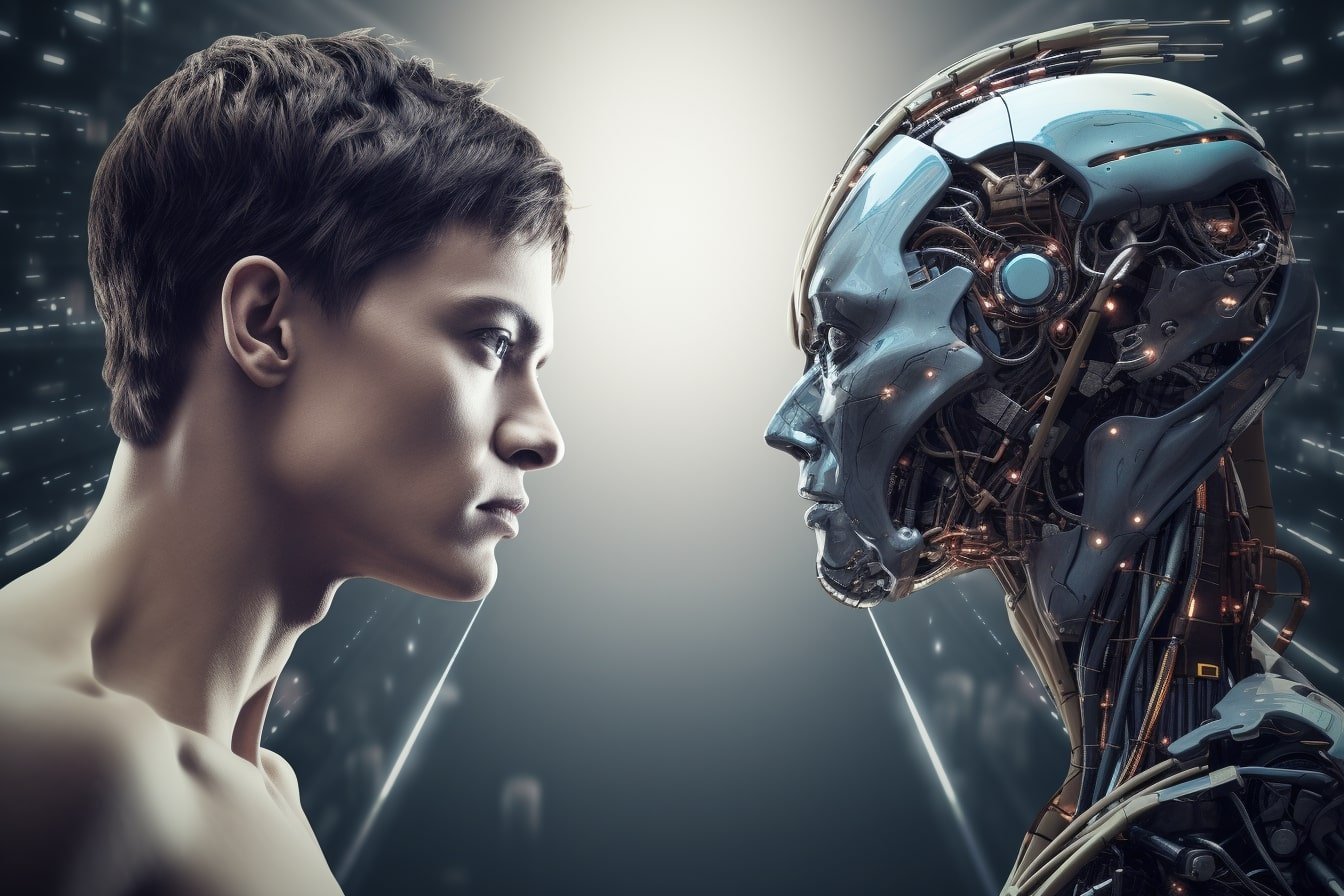Title: Exploring the Dynamics of Human vs. AI.
Introduction:
The advent of Artificial Intelligence (AI) has sparked a riveting debate on the relationship between humans and intelligent machines. Are they collaborators, working hand in hand to advance society, or competitors, vying for supremacy in various domains? In this particular blog we'll delve into the multifaceted dynamics of Human vs. AI, exploring their interactions, strengths, limitations, and the potential future landscape they shape.
1. Understanding Human Intelligence:
(a): Evolution of human intelligence: From ancient civilizations to modern societies, human intelligence has been the driving force behind progress and innovation.
(b): Complex cognitive abilities: Humans possess unique cognitive abilities such as creativity, empathy, and intuition, which have been instrumental in problem-solving and decision-making.
2. Rise of Artificial Intelligence:
(a): Development of AI technologies: Over the past decades, AI has witnessed remarkable advancements, fueled by breakthroughs in machine learning, neural networks, and deep learning.
(b): Mimicking human intelligence: AI systems are designed to replicate human-like abilities, including pattern recognition, natural language processing, and autonomous decision-making.
3: Collaborative Endeavors:
(a): Augmented intelligence: Humans and AI collaborate synergistically, leveraging the strengths of both to enhance productivity and efficiency in various fields, such as healthcare, finance, and education.
(b): Human-AI interaction: AI-powered tools and assistants complement human expertise, offering valuable insights, automating routine tasks, and facilitating data-driven decision-making
4: Areas of Competition:
(a): Job displacement concerns: The integration of AI technologies raises concerns about job displacement and the potential impact on employment sectors traditionally dominated by humans.
(b): Ethical dilemmas: As AI becomes more autonomous, ethical considerations arise regarding accountability, bias, and the potential misuse of AI-powered systems.
5.The Future Landscape:
(a): Hybrid intelligence systems: The future may see the emergence of hybrid intelligence systems, where humans and AI seamlessly collaborate, each contributing their unique strengths to achieve shared goals.
(b): Socio-economic implications: As AI continues to reshape industries and workforce dynamics, society must adapt to ensure equitable distribution of opportunities and resources.

Conclusion:
The dynamic interplay between humans and AI is reshaping the fabric of society, presenting both opportunities and challenges. While humans possess innate cognitive abilities and emotional intelligence, AI offers unprecedented computational power and data processing capabilities. By fostering collaboration, leveraging each other's strengths, and addressing ethical concerns, humans and AI can chart a path towards a future where they coexist harmoniously, driving innovation and progress.
Compiled by: Pratiksha Bisht
Comments
Post a Comment